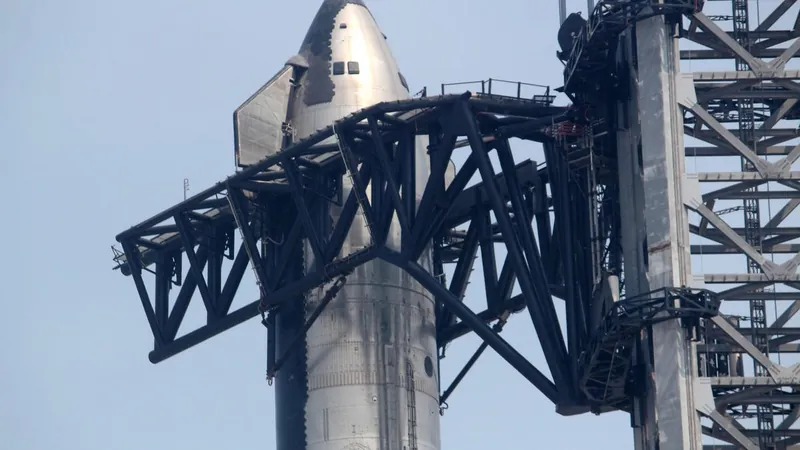
SpaceX's Bold Mars Mission: Five Uncrewed Starships Set for 2026
2024-09-29
In a groundbreaking announcement, SpaceX CEO Elon Musk revealed plans to send five uncrewed Starships to Mars, targeting launch windows in 2026, just a few years away. Musk shared this ambitious vision on his social media platform, X, emphasizing the importance of aligning launch opportunities between Earth and Mars to optimize energy use and time.
Timing is Everything: Mars Launch Windows
Musk explained that the next favorable launch window occurs in 2026, a critical timeframe for interplanetary travel. If SpaceX misses this opportunity, the next launch window will only come around in late 2028 to early 2029. He expressed confidence in a successful landing of these uncrewed missions, setting the stage for future crewed missions planned for the following launch window in 2028-2029. Should any setbacks arise during the uncrewed missions, Musk confirmed that the company would persist and aim for another attempt in the subsequent launch window, delaying human missions if necessary.
Challenging Terrain: Starship's Journey
While SpaceX successfully landed the Starship in the Indian Ocean during its latest mission in June, it still faces significant challenges. The Starship, currently touted as the largest spacecraft ever built, has yet to achieve a successful landing on solid ground—a key milestone before embarking on interplanetary missions.
Musk stated, "Regardless of landing success, SpaceX’s mission cadence to Mars will increase exponentially with every opportunity." The long-term vision for SpaceX, as he outlined, includes establishing a self-sustaining city on Mars within the next two decades. This grand vision supports plans for advanced payload capabilities, given the Starship's ability to transport up to 150 metric tons of cargo.
Regulatory Hurdles: Musk's Frustrations
SpaceX faces ongoing challenges, particularly with space regulations and government bureaucracy. Musk has openly criticized the delays caused by federal oversight, expressing frustration with what he describes as "stifling red tape" that hinders progress. He noted that the regulatory landscape is becoming increasingly complicated, which could further slow down SpaceX's ambitions.
Additionally, Musk's previous timelines have raised eyebrows; he initially predicted that ships would be on Mars by 2024. However, various setbacks—including regulatory scrutiny from the Federal Aviation Administration and environmental concerns—have forced the company to reassess its timelines.
Looking Ahead: A New Era of Space Exploration
The endeavor to reach Mars is not just about exploration; it reflects a greater vision of humanity's future among the stars. If successful, these missions could pave the way for the first human steps on Martian soil, transforming space travel and settlement.
As the countdown to 2026 begins, the world watches, wondering if SpaceX can deliver on its promises and overcome the hurdles ahead. With Musk's ambitious spirit and innovative technology, the dream of a human presence on Mars is closer than ever—but will they rise to the challenge? Only time will tell.



 Brasil (PT)
Brasil (PT)
 Canada (EN)
Canada (EN)
 Chile (ES)
Chile (ES)
 España (ES)
España (ES)
 France (FR)
France (FR)
 Hong Kong (EN)
Hong Kong (EN)
 Italia (IT)
Italia (IT)
 日本 (JA)
日本 (JA)
 Magyarország (HU)
Magyarország (HU)
 Norge (NO)
Norge (NO)
 Polska (PL)
Polska (PL)
 Schweiz (DE)
Schweiz (DE)
 Singapore (EN)
Singapore (EN)
 Sverige (SV)
Sverige (SV)
 Suomi (FI)
Suomi (FI)
 Türkiye (TR)
Türkiye (TR)